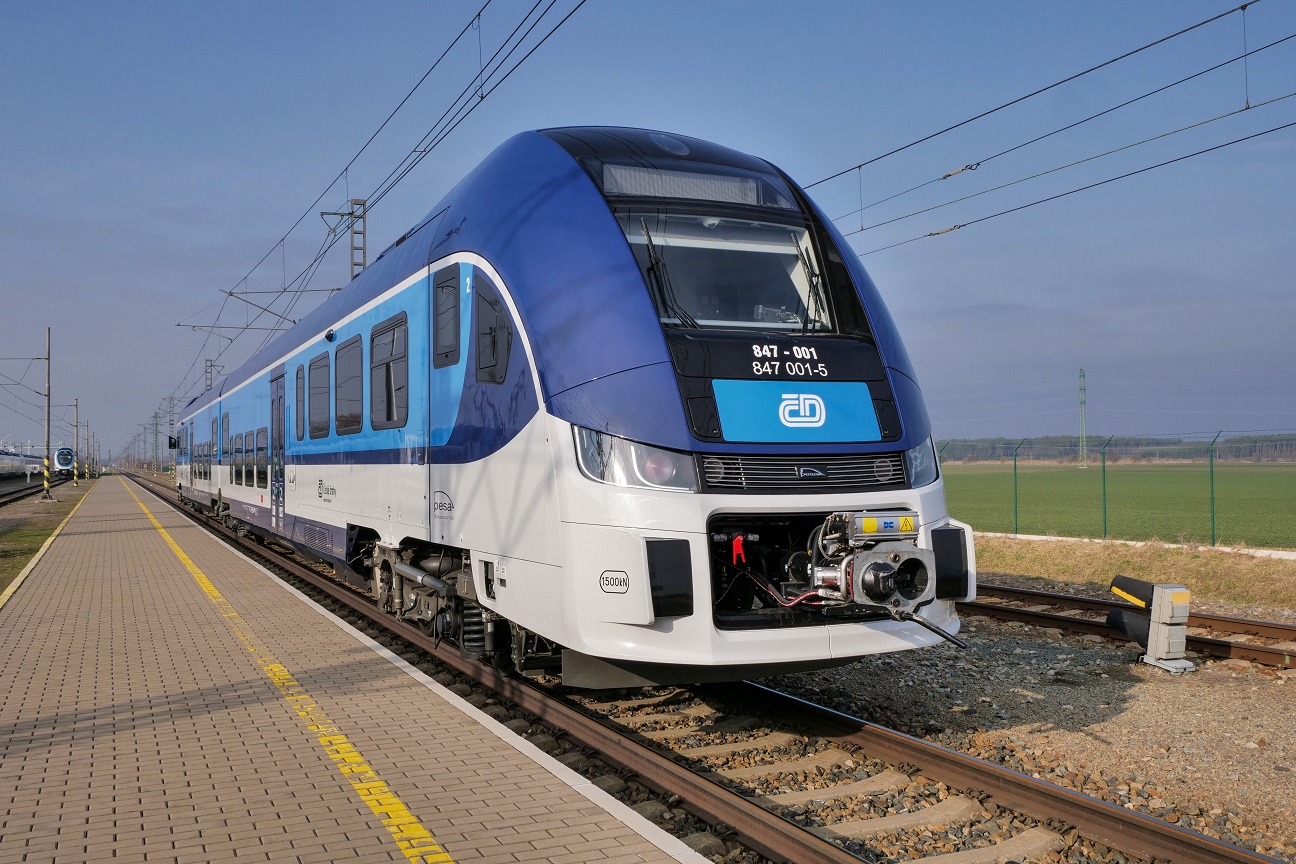České dráhy will start testing diesel fuel with an increased content of a sustainable biocomponent based on hydrotreated vegetable oil (HVO) in new 847 class diesel multiple units supplied by PESA. ORLEN Unipetrol is the partner in this project for the area of research and supply of fuels. The aim of the joint research project, which is spread over the 2024 to 2025 time period, is to verify applicability of this biodiesel fuel in passenger diesel multiple units and its subsequent deployment in normal operation. In addition to the above-mentioned companies, the project also involves the Centre of Vehicles for Sustainable Mobility of the Czech Technical University (ČVUT), Výzkumný ústav železniční (VUZ – Railway Research Institute), PESA and the ORLEN Unipetrol Centre of Research and Education.
Within the framework of fulfilment of the strategy of carbon emission reduction and the use of renewable resources with regard to legislative measures of the European Union and the Czech Republic, the national carrier “České dráhy” and the ORLEN Unipetrol company will launch, from the new year, a project aimed at joint testing of fuel with a sustainable biocomponent in passenger diesel multiple units. The fuel with a proportion of hydrotreated vegetable oil, so-called “HVO”, will be supplied by ORLEN Unipetrol, which is to prepare the individual blends in its production facility in Pardubice.
The plan is to reduce greenhouse gas emissions by up to dozens of percent
“This activity fits in with České dráhy’s long-term strategy in the area of reducing emissions and using renewable resources and is in line with the European Union’s RED III directive, which increased the greenhouse gas savings target from 6% up to 14.5% in 2030 compared to 2019. It is also in line with the National Clean Mobility Plan of the Ministry of Transport of the Czech Republic,” says Jiří Ješeta, Member of the Board of Directors and Deputy Director General of ČD for Passenger Transport.

The project is spread over the 2024 to 2025 time period and consists of three phases. During the first phase, suitable fuel blends will be identified, their attestation will take place and the legislative issue will be clarified. In the second phase, these blends will be tested in Pesa 847 class diesel multiple units at the Velim VUZ Test Centre. The Rolls-Royce engines of these units are homologated for the use of biofuels such as a blend of diesel oil and HVO. In the final, third part of the project, testing of the fuel blends will take place under real operating conditions on the railway lines of selected regions which have already expressed a preliminary interest in operating low-emission footprint trains.
“We want to reduce our carbon emissions by 25% by 2030 and to be carbon emission neutral by 2050 at the latest. One of the key areas for achieving these goals is the development and introduction of liquid biofuels and alternative fuels, such as hydrogen for road and rail transport,” says Tomáš Herink, Member of the Board of Directors of the ORLEN Unipetrol Group, responsible for production, research and development, adding: “By using this renewable and therefore sustainable fuel, which is produced by chemical processing of waste fats and vegetable oils, it is possible to significantly reduce carbon dioxide emission.”
Thanks to the large number of RegioFox diesel multiple units ordered, the HVO fuel used can mean a really significant reduction in emissions in the future. České dráhy has now ordered a total of 106 modern units of the 847 class from the Pesa company.
We are introducing the HVO fuel
Hydrotreated Vegetable Oil (HVO) belongs among biocomponents transformed by refinery processes into a substance corresponding to the petroleum diesel fraction in terms of its composition. The HVO fuel complies with the ČSN EN 15940 standard, Annex II to the Fuel Quality Directive (2009/30/EC) or the U.S. specification “ASTM D975”. HVO is compatible with mineral diesel oil and can therefore be added at higher admixtures up to 30% by volume depending on the season of the year. If the vehicle’s technical specifications allow the use of synthetic XTL fuels, it is even possible to run on pure HVO.
HVO produced from different sources varies in terms of quality characteristics. The difference consists mainly in the cleaning method, hydrogen consumption and above all in the emission footprint. If the HVO is produced from vegetable oil which has been grown specifically for the purpose of fuel production, all activities related to its production are counted in the final emission footprint of the fuel. Nevertheless, greenhouse gas savings of 60-65% (CO2 equivalent) can be achieved compared to conventional fossil fuel. In the case of utilisation of used vegetable oils or fats as waste matter, emission savings of up to 90-95% can be achieved compared to conventional petroleum-origin fuel.